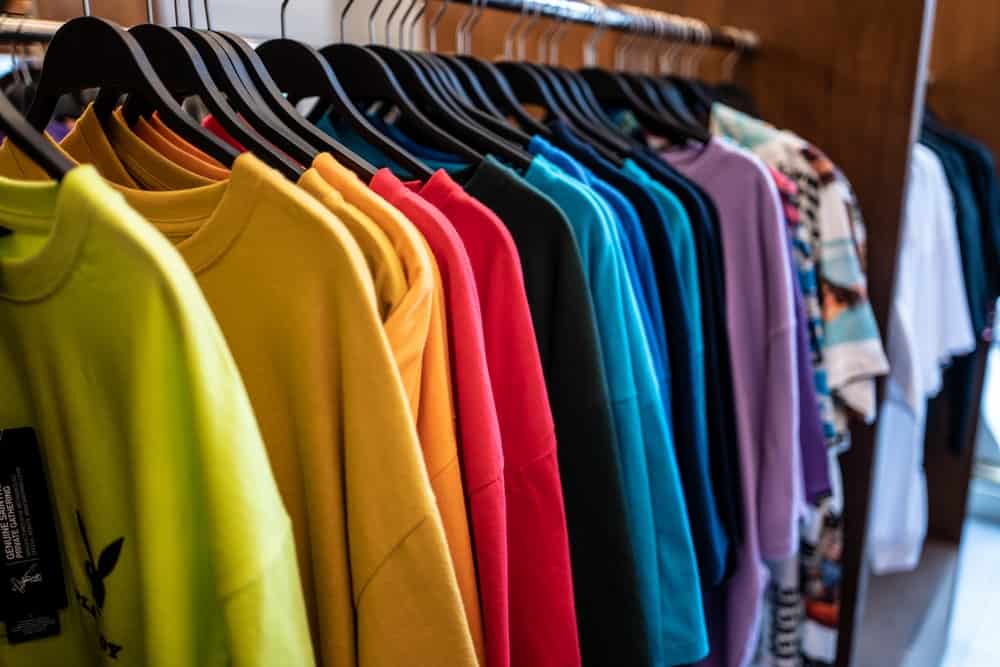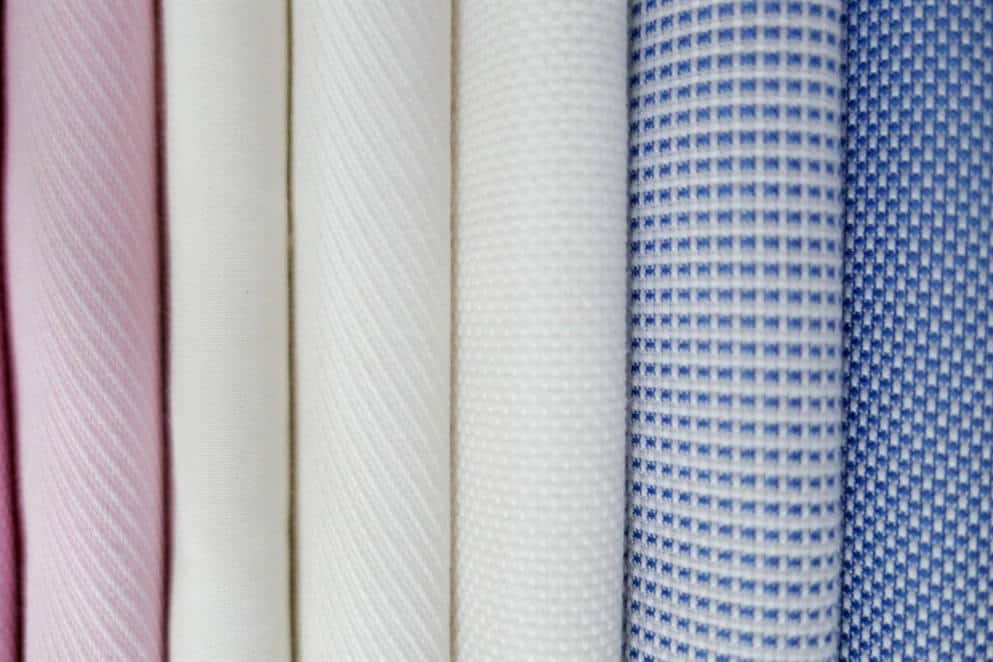Knowing how much a shirt weigh doesn’t sound like it matters. However, for those in the apparel industry, the shirt’s weight can hold so much information about the garment. This article will tell you how to weigh a shirt and what it entails.
How Much Does a Shirt Weigh?
With many factors on the line, the weight of the shirt varies a lot. However, most shirts are around 85 to 200 grams (3 to 7 oz.). That said, the shirt’s materials, size, and length go higher or lower than the standard.
| Lightweight | 85g-141g (3-5 oz.) |
| Mediumweight | 141g-170g (5-6 oz.) |
| Heavyweight | 170g and up (6 oz. and up) |
As a starter, shirts are divided into three types: lightweight, medium-weight, and heavyweight. The three different types have their functions and pros and cons.
Light shirts are the most popular among consumers. Linen and cotton are amongst the most popular materials for this type of shirt. It’s the perfect match for hotter and humid climates as it lets the skin breathe.
Medium-weight shirts are in the middle ground. It commonly has polyester and spandex for its material. The medium shirt settles in the middle ground where the skin can breathe but with more restrictions.
Heavy shirts have thick and absorbent materials such as knitted and wool. This type of shirt is for colder climates as it retains body heat. Most long sleeves and hoodies also belong to this category.
Knowing the materials and measurements of the shirt can help you tremendously. If you have no way of learning their weight beforehand, relying on those factors can give you a rough estimate.
How to Know the Weigh of a Shirt?
There are different ways to know the weight and measurements of the scale. Based on your resources and purpose, you can take other methods, such as:
Using a Scale
If you want to know the weight of your shirt for shipping purposes, relying on the scale is the best way to do it. Getting the accurate weight of the clothes is essential as it can affect the quality and cost of your package.
Saving 10 cents per package might sound small, but doing it a thousand times can save you $100. If you are a business, this small profit margin is significant. In that case, you can achieve accurate weight through a reliable scale.
While most courier and delivery services have a scale available, you can also weigh your shirts home. The best way to do it is by using a kitchen scale. If you are considering scaling lighter objects, kitchen scales provide an accurate measurement.
Another pro of using a kitchen scale is it’s inexpensive. If you are a small business looking to start shipping shirts, starting with a kitchen scale can provide you with the accurate shirt weight you need.
Label
Another way you can learn the weight of your shirt is by its label. Most packaging indicates the measurement of the shirt along with its weight. If your shirts are from delivery or online shopping, you can check the label as it has the weight indicated.
Factors That Affect the Weight of the Shirt
As stated earlier, some factors significantly affect the weight of your shirt, such as:
Material
Material can vary from shirt to shirt. Most shirts blend natural and synthetic materials such as cotton and polyester.
As a standard, natural fibers tend to be much heavier than synthetic ones. For example, wool and cotton shirts can be denser than polyester ones despite having the same measurements.
If you want a lighter and breathable shirt, opt for linen or cotton and polyester mix. Medium shirts lean more into natural and absorbent fabrics such as cotton, spandex, and rayon. Lastly, heavy shirts are mostly made with organic materials such as wool.
Size
Sizing is also a significant factor when it comes to the weight of a shirt. Despite having different materials, it’s evident that a size L shirt can have more weight than an XS. Sizing is also one of the best ways to estimate the size of a garment.
Most shirts for men are drawn-out than for women. The apparel’s size and weight can be based on the sex it’s made for.
Brand
Despite having the exact sizes in their catalog, most branded shirts have different weights for their shirts. For example, a size small at Gildan Softstyle Men’s is 3.76oz, while the same size on Fruit of The Loom is 3.57oz.
Of course, this is just an estimation. The material varies from shirt to shirt. The style can also add or decrease the weight of the shirt.
| Brand | Weight |
| American Apparel | 100-165g (3.5-5.6 oz) |
| Fruit of The Loom | 100-170g (3.5-6 oz.) |
| Gildan Softstyle Men’s | 95-180g (3.3-6.3 oz) |
Why does the Weight of the Shirt Matter?
Although it might sound trivial, the weight of the shirt does matter. It’s particularly important in the production and shipping of shirts and many more, such as:
Saving Costs
If you have a clothing business, knowing the accurate weight of the shirt is essential. It can save on the production and delivery cost of your shirt.
There are many ways for shirt production to be cost-effective. Blending polyester and other synthetic fibers can decrease the weight of the shirt. It can also provide more profit as synthetic fibers are much cheaper than natural ones.
With delivery, having the accurate weight of the clothes can help with the costs. The higher the weight, the larger the price. You can decrease the delivery fee for your shirts by having the correct numbers.
Designing and Printing
Weight can indicate if your shirt has a particular print or design on it. Light shirts have fewer fibers, so that that ink printing can be tricky. Screen printing is also unsuitable as the design will not transfer to the clothing.
Medium and heavyweight shirts are akin to letting the ink seep into their fiber. If you plan to use the shirts in printing, choose medium to heavy shirts. It will ensure the quality of the print.
Knowing the Quality
Although the factors can differ, various quality shirts can be measured by the weight of the fabric. Although most use a blend of synthetic and natural fibers, high-quality shirts hinge more on raw materials. The lighter the shirt is, the less natural fibers it has.
Most quality shirts have some weight to them compared to synthetic ones. Polyester and spandex are pretty light as they are made with plastic. However, natural wool and cotton are much heavier and absorbent.
As you can see, the weight of the shirt can tell more than the lightness of the material. It can also show quality and even save you money.
Best Fabrics for Every Weight of Shirt
Know that the shirt’s weight can be handy, here are some fabrics you can look out for based on the weight.
Best Lightweight Fabrics
| Fine Cotton | 85g-140g (3-5 oz.) |
| Linen | 85g-130g (3-4.5 oz.) |
For most shirts, light materials are the standard. As it’s causal wear, comfort and flexibility are very important. Natural fabrics are some of the most popular selections for these types of shirts.
Refined cotton is the sought-after material for light shirts. It’s from the natural cotton fibers that are spun again and again. The process removes any impurities from the fibers.
Linen is best for dress shirts. Most formal blouses are made with linen as it provides breathable ware. It’s the prime candidate as most dress shirts have long sleeves.
Best Mediumweight Fabrics
| Poplin | 155g-180g (5.6-6.3 oz.) |
| Cotton Polyester | 145g-170g (5.5-6 oz.) |
Amongst the sought-after t-shirt fabric is cotton polyester. The material has more weight to it while keeping it reasonably breathable. It’s also the best candidate for inking and screen prints.
It can contain the ink while still having a loose fit. Other apparels such as hoodies are also made with this fabric. Cotton polyester is much cheaper, soft, and gentle to the skin than fine cotton.
Poplin, on the other hand, is meant for dress shirts. It has a clean and crisp texture when ironed. It’s a reasonably transparent fabric, so using it in a casual is not recommended.
Best Heavyweight Fabric
| Twill | 180-280g (6.3-10 oz) |
| Flannel | 180-340g (6.5-12 oz) |
| Wool | 340-400g (12-14 oz) |
Most heavy fabrics are used for winter wear. The most common materials for sweaters, jackets, and coats are flannel, wool, and twill. Twill provides an excellent and shiny finish and is quite durable and hardy.
Wool and flannel are primarily made for sweaters and shirts used to cover up for winter. Made with natural fibers, the fabric provides warmth and is soft to the touch. The tight-knit thread of the materials retains the heat of the body.
In Summary
It might come as a surprise that knowing how much a shirt weighs can become useful information. Understanding the shirt’s weight can be crucial for quality checks or delivery options. The article gives you a more accurate measurement and scale for your apparel.

Jessica Oliver is a fashion enthusiast with more than ten years of experience in the industry. She previously managed her own clothing store in New York before becoming a mother of three. With a passion for sustainability and a desire to share clothing care and recycling tips.







